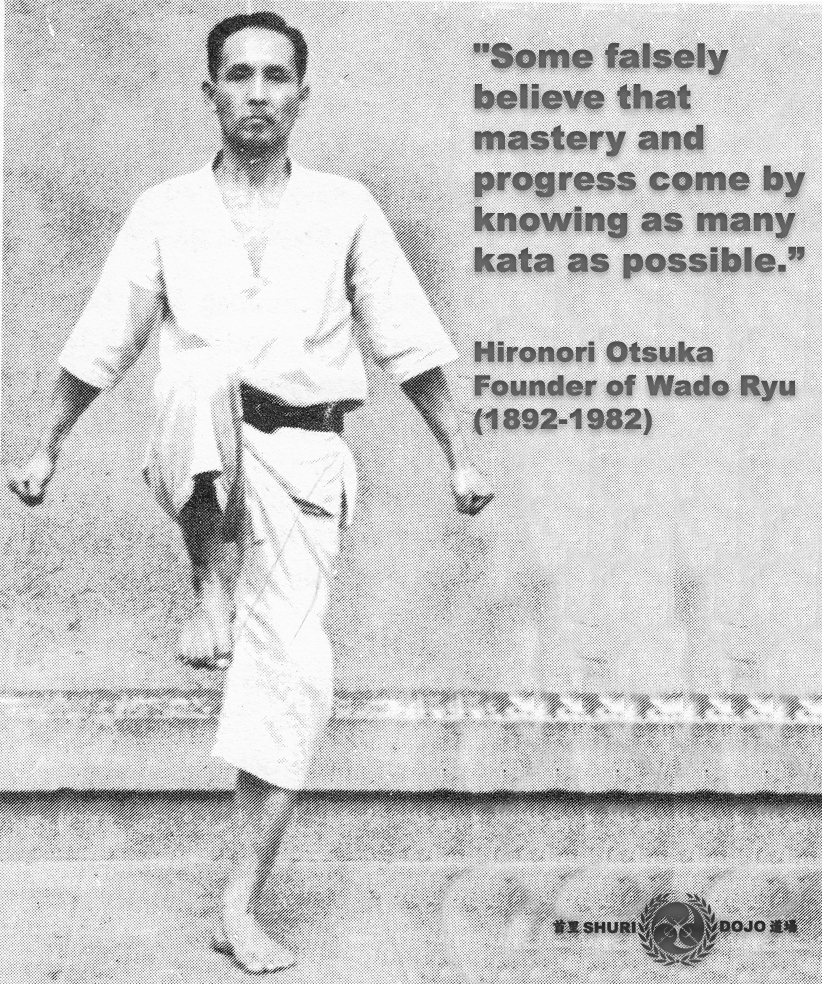
“Some falsely believe that mastery and progress come by knowing as many kata as possible. In the older days, one knew only about two or three at the most. Even to use one kata properly and efficiently is not an easy task. One must remember that it is quality over quantity when practicing any kata.” ??
Hironori Otsuka founder of Wado Ryu (1892-1982)
The kata are the legacy of the masters and teachers who have gone before us (they even sometimes bear their names). They are a codified amalgamation of their self-defense knowledge. In addition, teaching a kata favors the transmission of this knowledge from one generation to another.
There are many kata, some of them include a wide range of variations, but with the same name. Some are very specific of a given style, others share the same origin, but were altered over time and from one ‘ryu’ to another.
This is why, if you consider a kata being a defense system on its own, you cannot just practice it, or just list the techniques: you need to go further in its study and consider the kata as a complete self-defense training method.
In his book ‘Karate-do: My way of life’, Gichin Funakoshi recalls that he started to train karate (or Te, Toudi) at the age of 11 under Master Azato. Funakoshi trained exclusively on ‘naihanchi’ kata, for three years. Funakoshi found that tiresome, exasperating, even humiliating at times. However, he made a motto; “hito kata san nen” (one kata in three years): it was a common saying among karate masters at the time. Actually, this saying does not mean that you need three years to learn a kata, but rather that it is the minimum of time required to really understand the kata, too perhaps allow the responses to an attack to become automatic.
Of course, today, it is hard to imagine that you would learn only one kata during three years. In fact, students always want to learn more and to learn fast. Today the ‘Youtube sensei’ is where students turn to, instead of learning from a good teacher at a dojo. Nevertheless, the fact is that quantity is at the expense of quality.
Trust the quality of what you know, not the quantity. ??
? Photo Credit: Karate history Denmark – With thanks to Iain Abernethy
